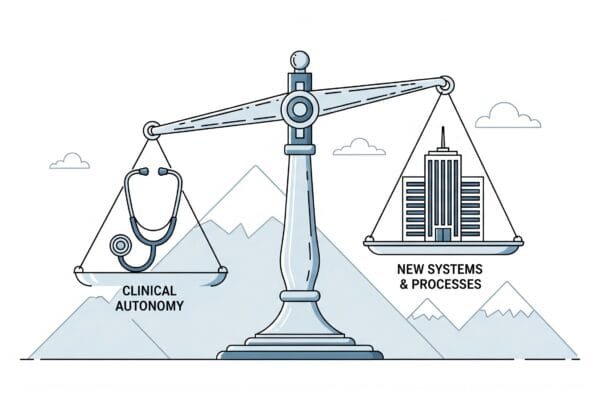Selling your Early Intervention (EI) practice in Richmond, VA, presents a unique opportunity. The market shows a significant unmet need for services, creating strong buyer interest. However, a successful sale depends on understanding your practice’s true value and navigating a complex process involving state regulations and specialized buyer networks. This guide provides a clear overview to help you prepare for your transition, whether you plan to sell now or in a few years.
Curious about what your practice might be worth in today’s market?
Market Overview
The market for Early Intervention practices in Richmond is defined by strong demand and specific operational requirements. Understanding these factors is the first step in positioning your practice for a successful sale.
High Demand and Growth Potential
Virginia currently serves less than 3% of all infants and toddlers eligible for EI services. This significant gap between supply and demand means your practice is a valuable asset in the community. Sophisticated buyers, from private equity groups to expanding regional providers, recognize this potential for growth. They are actively seeking established practices with a strong reputation in the Richmond area.
Regulatory and Staffing Landscape
Your practice operates within the framework of the Infant & Toddler Connection of Virginia (ITCVA). Compliance with its regulations, including practitioner certification and service delivery guidelines, is not just a requirement. It is a key indicator of operational quality for a buyer. A stable, certified team of therapists and specialists is one of the most valuable assets you have. It demonstrates the sustainability of your revenue and clinical operations post-sale.
Key Considerations for Sellers
When preparing to sell, buyers will look closely at the stability and growth potential of your practice. We find that focusing on the right areas in the 1-2 years before a sale can dramatically increase the final value. Here are three areas buyers always investigate in a Richmond EI practice.
- Your Referral Network’s Strength. Where do your clients come from? Buyers want to see consistent, diversified referral pathways from pediatricians, hospitals, and community organizations. A heavy reliance on a single source can be seen as a risk. Documenting your referral sources demonstrates the durability of your client base.
- Your Reimbursement and Payer Mix. A clear, efficient billing process is a sign of a well-run business. Buyers will analyze your contracts with Virginia Medicaid, Tricare, and other private insurers. Having clean financial records and favorable reimbursement rates simplifies due diligence and builds buyer confidence.
- Your Story of Impact. Beyond the numbers, buyers are investing in the positive outcomes you create for children and families. While you cannot share protected health information, you can compile anonymized data on developmental progress, create case studies, or highlight family testimonials. This narrative gives your practice a qualitative value that numbers alone cannot capture.
Market Activity
You may not see many EI practices for sale on public websites. This does not mean the market is quiet. It means the transactions are happening behind the scenes.
A Market of Private Deals
Sales of high-quality healthcare practices like yours are rarely public affairs. They are typically managed confidentially to protect your staff, clients, and community reputation. This privacy means that finding comparable sales data is nearly impossible for an independent owner. Valuations and deal structures are handled through private networks of qualified buyers and experienced advisors.
The Importance of the Right Buyer
The buyers in this space are not all the same. Some are financial buyers, like private equity firms, looking for a platform to grow. Others are strategic buyers, like larger therapy providers, looking to expand their footprint in Richmond. The “right” buyer depends on your goals for legacy, staff retention, and financial outcome. Running a structured process that creates competitive tension among different buyer types is the only way to ensure you receive the best possible offer.
Every practice sale has unique considerations that require personalized guidance.
The Sale Process
A practice sale is a structured project, not a single event. While every deal is unique, the process generally follows a clear path. Many owners tell us they wish they had understood these stages sooner.
- Preparation & Valuation. This is the foundational stage. It involves organizing your financials, understanding your practice’s market value, and identifying potential areas for improvement before going to market. Starting this phase 12-24 months before you want to sell yields the best results.
- Confidential Marketing. Your advisor will create marketing materials that tell your practice’s story and present its financial health. These are shared confidentially with a curated list of vetted, qualified buyers.
- Offers & Negotiation. Interested buyers will submit initial, non-binding offers. We help you compare these offers not just on price, but also on structure, such as cash at close, rollover equity, and potential earnouts.
- Due Diligence. The chosen buyer will conduct a deep dive into your practice’s finances, operations, and legal compliance. This is where most unexpected challenges arise. Proper preparation is critical to getting through this stage smoothly.
- Closing. Once due diligence is complete, final legal agreements are drafted and signed. The funds are transferred, and the transition of ownership begins according to the plan you’ve put in place.
Valuation
How is the value of your practice determined? It is not based on your assets or a simple percentage of revenue. Sophisticated buyers use a formula based on your true cash flow: Adjusted EBITDA multiplied by a market multiple.
Adjusted EBITDA starts with your net income and adds back interest, taxes, depreciation, and amortization. Then, we normalize it by adjusting for owner-specific expenses like an above-market salary, personal vehicle costs, or other discretionary spending. This figure represents the practice’s true earning potential for a new owner. That Adjusted EBITDA is then multiplied by a number (the multiple) that reflects your practice’s quality and risk. Factors like having a diverse team, strong growth, and a good payer mix lead to a higher multiple.
Here is a simplified example:
| Metric | Amount | Description |
|---|---|---|
| Reported Profit | $300,000 | The bottom line on your tax return. |
| Adjustments | +$100,000 | Owner salary normalization and add-backs. |
| Adjusted EBITDA | $400,000 | The practice’s true cash flow. |
| Valuation Multiple | x 5.5 | Based on market factors for a practice this size. |
| Enterprise Value | $2,200,000 | The estimated total value of the business. |
Getting this calculation right is the foundation of a successful sale strategy. Most practices are undervalued until their EBITDA is properly normalized and their story is framed for buyers.
A comprehensive valuation is the foundation of a successful practice transition strategy.
Post-Sale Considerations
The day you sign the closing papers is a beginning, not an end. Planning for your transition is just as important as negotiating the sale price. Your role, your team’s future, and your financial security are all shaped by the deal structure you agree to.
- Your Future Role. Do you want to leave immediately, or stay on clinically for a few years? Your transition plan is a key part of the negotiation. Many buyers want the seller to stay on to ensure a smooth handover, which gives you leverage to define your role on your own terms.
- Protecting Your Team and Legacy. The right buyer will recognize that your team is your greatest asset. We help you negotiate terms that protect your staff’s future and ensure the clinical culture you built continues to thrive. Your legacy is more than a name on the door. It is the continuation of quality care.
- Structuring Your Proceeds. Control is not always a simple yes or no question. Your deal can be structured in many ways. You might take cash at close, or you could choose to “roll over” a portion of your equity into the new, larger company. This gives you a second financial opportunity when that larger entity is eventually sold. Thinking about these options in advance is key.
Not sure if selling is right for you?
Frequently Asked Questions
What is the current market demand for Early Intervention practices in Richmond, VA?
The market for Early Intervention practices in Richmond shows significant unmet demand, as Virginia currently serves less than 3% of all eligible infants and toddlers. This creates strong buyer interest due to the high growth potential.
How does compliance with state regulations impact the sale of an EI practice?
Compliance with the Infant & Toddler Connection of Virginia (ITCVA) regulations, including practitioner certification and service delivery guidelines, is crucial. It indicates operational quality and is a key factor buyers evaluate, along with the stability of your certified team.
What are buyers looking for in the referral network of an Early Intervention practice?
Buyers want to see a consistent and diversified referral network from pediatricians, hospitals, and community organizations. Relying heavily on a single referral source can be seen as risky. Documenting your referral sources shows the durability and stability of your client base.
How is the valuation of an Early Intervention practice determined?
Valuation is based on the practice’s true cash flow, using Adjusted EBITDA multiplied by a market multiple. Adjusted EBITDA is net income with add-backs for non-recurring expenses and normalization for owner-specific costs, reflecting true earning potential. The multiple depends on factors such as team diversity, growth, and payer mix.
What are the key steps involved in the sale process of an Early Intervention practice?
The sale process includes: 1) Preparation and Valuation – organizing financials and identifying improvements; 2) Confidential Marketing – sharing materials with vetted buyers; 3) Offers and Negotiation – comparing price and deal structure; 4) Due Diligence – buyer reviews finances and operations; 5) Closing – final agreements and ownership transition.



